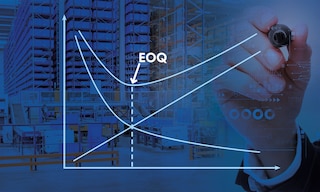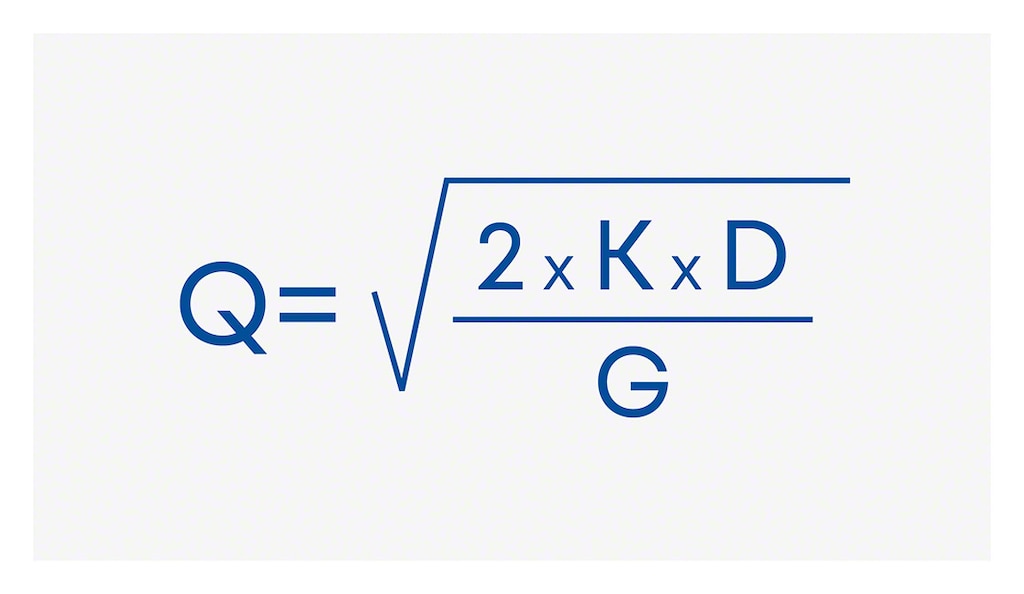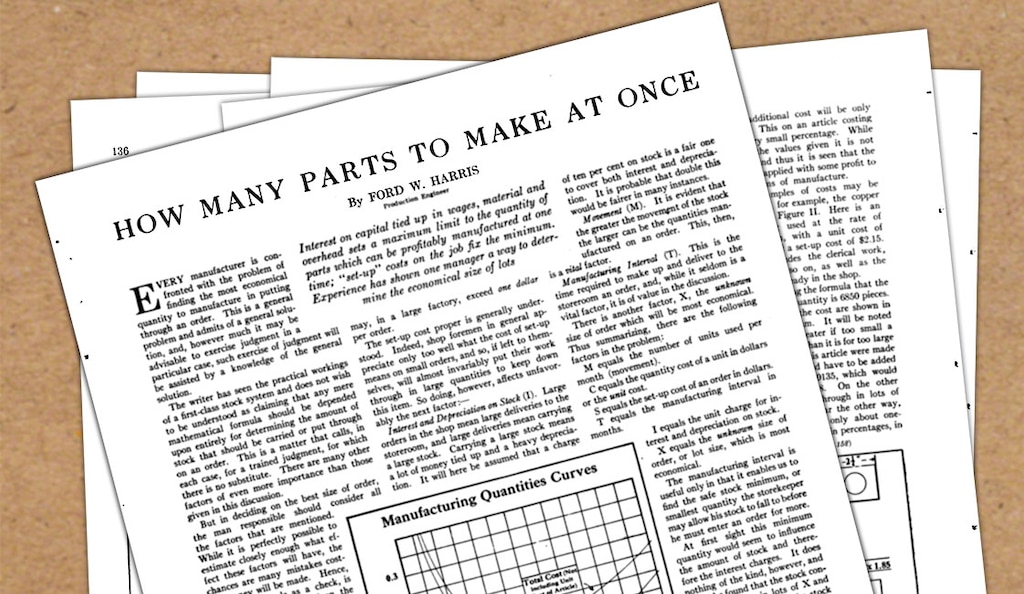
EOQ: formula and use
Retailers and e-commerce companies have to be particularly careful with their inventory. While overstock can drive up costs, stockouts could result in missed sales opportunities. The economic order quantity (EOQ) model is a tool any business can use to find the perfect balance.
EOQ meaning and purpose
EOQ is an inventory management method that determines the optimal quantity of products to place in an order. It aims to minimize costs linked to the transaction, inventory holding, and stock replenishment. The EOQ systematizes warehouse stock procurement, defining when to place orders with suppliers and in what quantities.
EOQ advantages and disadvantages
Calculating the EOQ offers several benefits. Namely, it balances inventory levels, reduces the risk of waste and obsolescence, and optimizes cash flow and working capital investment. This is all done taking into account demand and minimum safety stock. Once you’ve estimated how much product you’ll sell, you can calculate when and how much to order to reach optimal stock levels.
The economic order quantity model assumes that the demand, lead time, order price, and holding cost remain constant. This technique is widely used in logistics operations because of its simplicity and its generally accurate forecasts and estimates. However, it doesn’t consider seasonal or targeted campaigns, replenishment delays, or discounts for bulk purchases.
How do you calculate the EOQ formula?
When establishing your ideal EOQ, you need to consider the following:
- Ordering cost. Each purchase order, its processing, and its delivery are associated with an expense.
- Inventory carrying cost. Storing an item for a certain period entails a unit price comprising elements such as insurance and deterioration. This is expressed as a unit cost per period.
- Total cost. This is the sum of the two previous costs. Knowing it will help you find ways to reduce it.
EOQ formula
Based on the variables mentioned above, EOQ is represented by the annual demand for the product in question (D), the cost of placing an order (K), and the cost of holding one unit in inventory throughout the year (G).

It’s important to note that this calculation doesn’t take into account the space available to store the recommended quantity of products for each purchase. If the two don’t match, you can always recalculate the EOQ or explore alternatives to leverage space through a warehouse consulting specialist.
Practical real-world example of the EOQ model
Company A distributes large tiles and has an annual demand of 4,000 units (D). The cost of each order or purchase of materials and associated costs (K) amounts to $100. Finally, storing each tile for a year costs $4 (G).
| Q = √ (2 x 4,000 x 100 / 4) = 447 units |
Applying the formula gives us an EOQ of 447 tiles. Therefore, the business should request this quantity every time it orders a shipment from its supplier.
| Optimal number of orders: 4,000 / 447 = 8.9 |
Moreover, every year, the company should place at least nine orders of 447 units to reach its annual demand of 4,000 tiles.
Who created the EOQ model?
The father of EOQ is US production engineer Ford Whitman Harris. In 1913, while working for Westinghouse Electric and Manufacturing Company, he published the article How many parts to make at once in Factory, The Magazine of Management. However, the EOQ didn’t gain popularity until 1934, when consultant R. H. Wilson successfully developed the formula. For this reason, it’s also known as the Wilson model.

The EOQ in practice
Implementing the EOQ formula provides key information for inventory management. But it’s advisable to take additional steps to determine whether your current quantities could be more cost-effective.
- First, identify your primary supply chain expenses.
- Next, determine the specific amounts for each group of items managed.
- Then, calculate the EOQ model for each product in your inventory.
- Compare the results of the formula with your current orders. Which ones differ the most?
- Take action, implementing any necessary changes in supplier management.
- Recalculate the EOQ regularly, especially if there are changes in ordering costs and product demand.
This is one way to assess the cost-effectiveness of the orders you place with suppliers. Nonetheless, to significantly improve your warehouse productivity, it’s extremely beneficial to have comprehensive data on your company’s logistics activities beyond annual sales, procurement expenses, and the cost of holding a unit in inventory annually.
Are you looking to gain a holistic view of your company’s processes? Be sure to get in touch. The Mecalux Group has been specializing in warehousing since 1966. Our in-house developed warehouse management system is designed to maximize supply chain competitiveness. We’ll advise you on the solution that best suits your needs. And if you lack space to store your EOQ, we’ll explore how to optimize it with storage systems.
